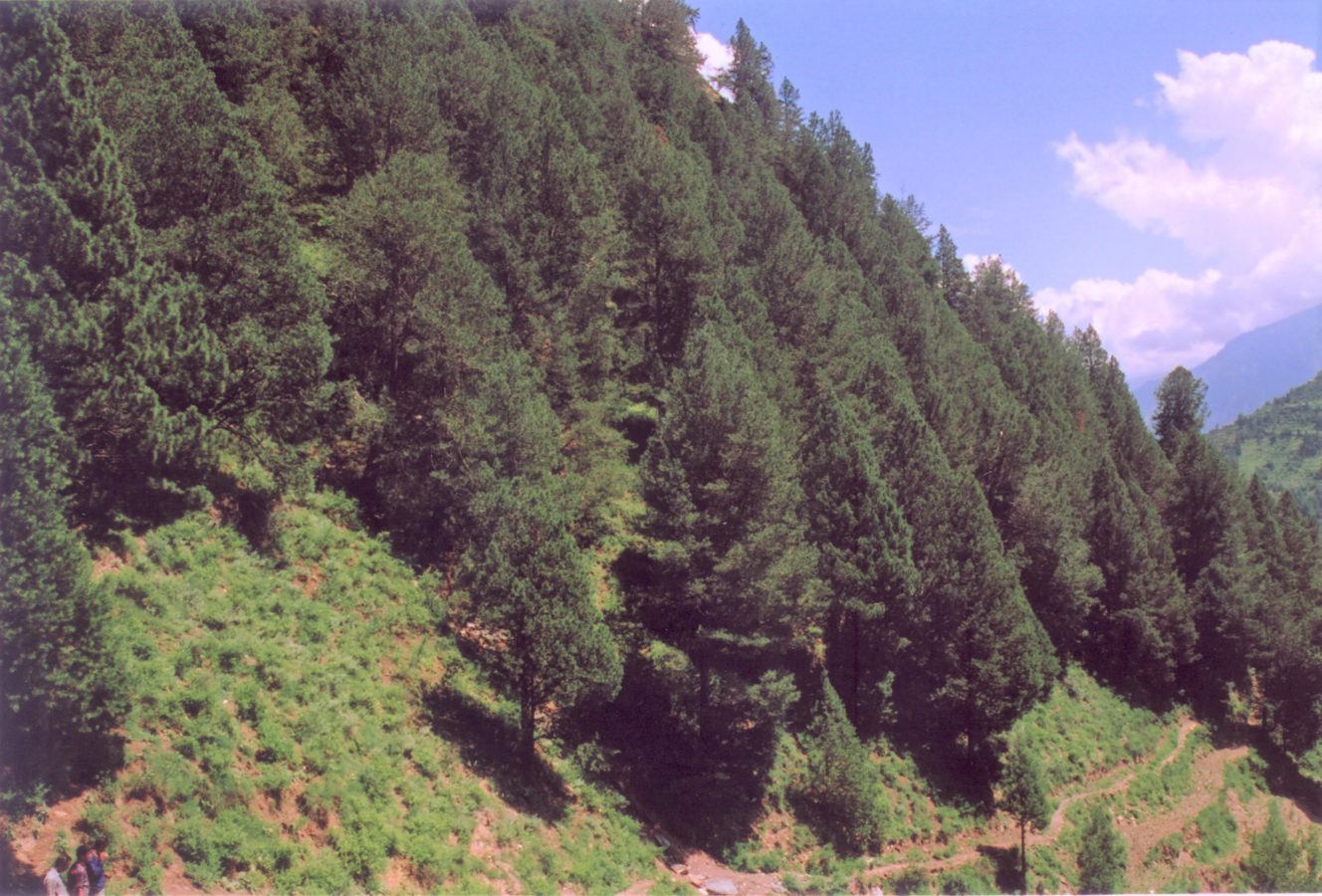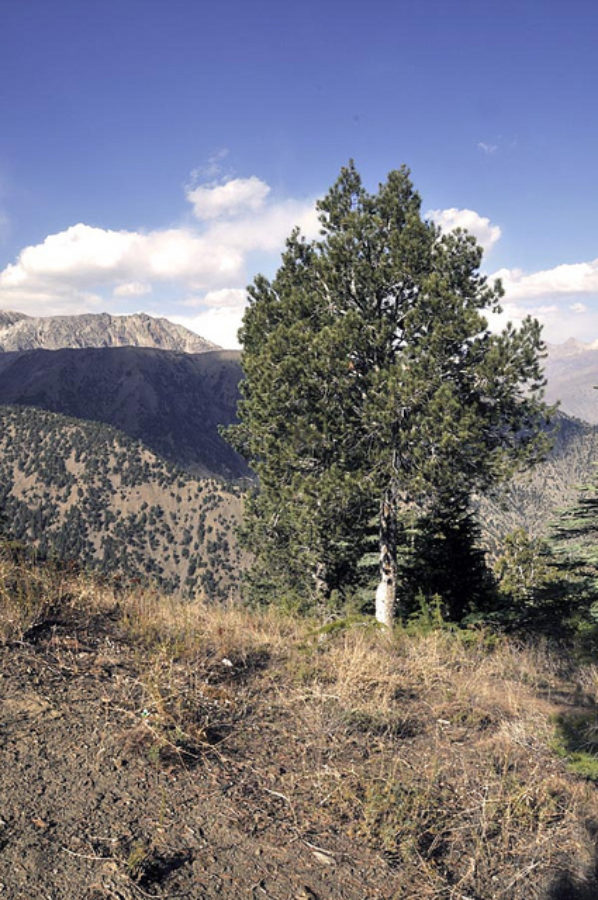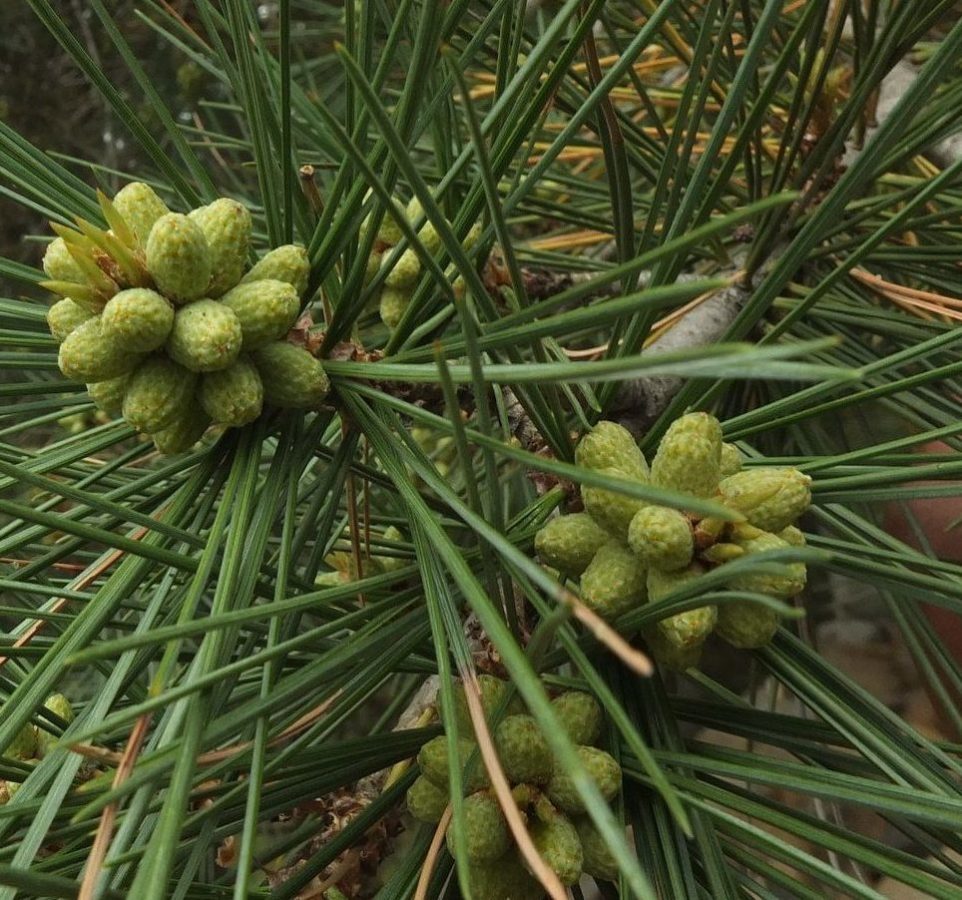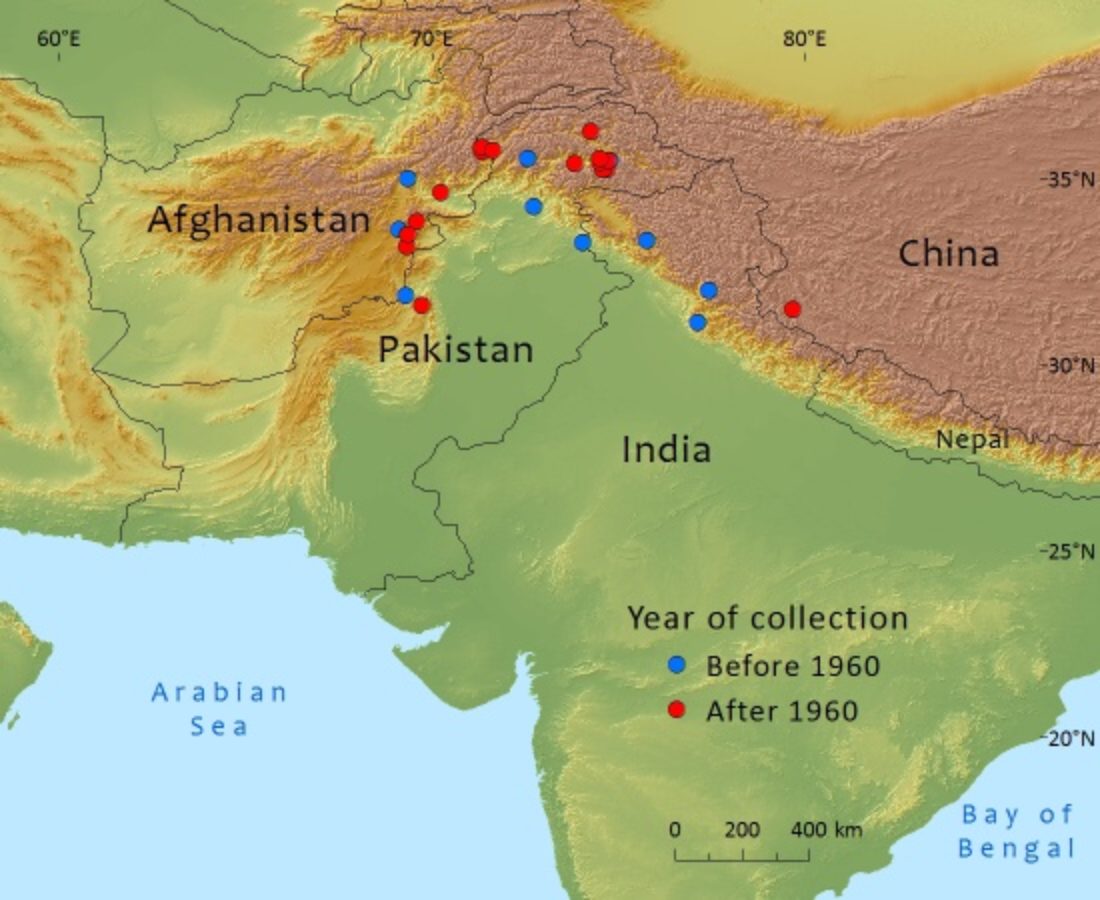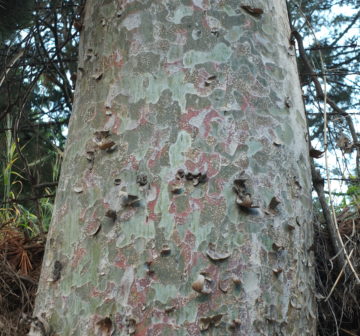Pinaceae
Pinus gerardiana
A small pine from the dry valleys of the western Himalayas. Over-exploitation for its edible seed, coupled with conversion of forests for agricultural use and logging for timber and firewood have led to a range wide decline that is sufficient for it to be listed as Near Threatened.
Human Uses
The main economic use of this pine is of its edible, oil-rich seeds (neoza in Hindi), which are harvested by knocking the cones from the trees in autumn and early winter. In some areas, local mountain clans and villages own rights to the seeds and control the harvest, which is exported to markets on the plains of northern India. In traditional systems, sufficient cones are usually left on the tree to ensure that some seed is available for natural regeneration. Trees that do not produce enough cones any more are cut as firewood and new trees are planted from seeds to maintain stock. In other areas, harvesting rights are held by private contractors: in these areas all cones are collected (Peltier and Duffay 2009). The wood is used locally for light construction and carpentry. This species is comparatively rare in horticultural cultivation (despite good hardiness) and mainly restricted to collections in arboreta. Its bark is reminiscent of that of the Lacebark Pine (P. bungeana), but somewhat less decorative; the seeds of P. gerardiana are much larger and better for consumption.
References and further reading
- Farjon, A. (2013). Pinus gerardiana. The IUCN Red List of Threatened Species 2013: e.T34189A2850009. http://dx.doi.org/10.2305/IUCN.UK.2013-1.RLTS.T34189A2850009.en. Downloaded on 01 November 2016
- Kumar, R. (2015). Pinus gerardiana: ecology, regeneration and propagation. Saarbrucken, Germany: Lap Lambert Academic Publishing. 142 pp.
- Kumar, R., G.S. Shamet, H. Mehta, N.M. Alam, R. Kaushal, O.P. Chaturvedi, N. Sharma, B.A. Khaki & D. Gupta (2016). Regeneration complexities of Pinus gerardiana in dry temperate forests of Indian Himalaya. Environmental Science and Pollution Research 23:7732-7743.
- Kumar, R., G.S. Shamet, A. Pandey, V. Kakade, D. Dinesh, N. Sharma, D. Gupta (2016). Impact of anthropogenic disturbances on ecology of Pinus gerardiana Wall in Indian Himalaya: a review. Agricultural Research and Technology 1(3):ARTOAJ.MS.ID.55561.
- Peltier, R. and and V. Dauffy. (2009). The Chilgoza of Kinnaur. Influence of the Pinus gerardiana edible seed market chain organization on forest regeneration in the Indian Himalayas. Fruits 64(2): 99-110
- Urooj, R. & A. Jabeen (2015). Present status of Pinus gerardiana Wall. in Pakistan: a review. Middle East Journal of Business 10(4):46-48.
